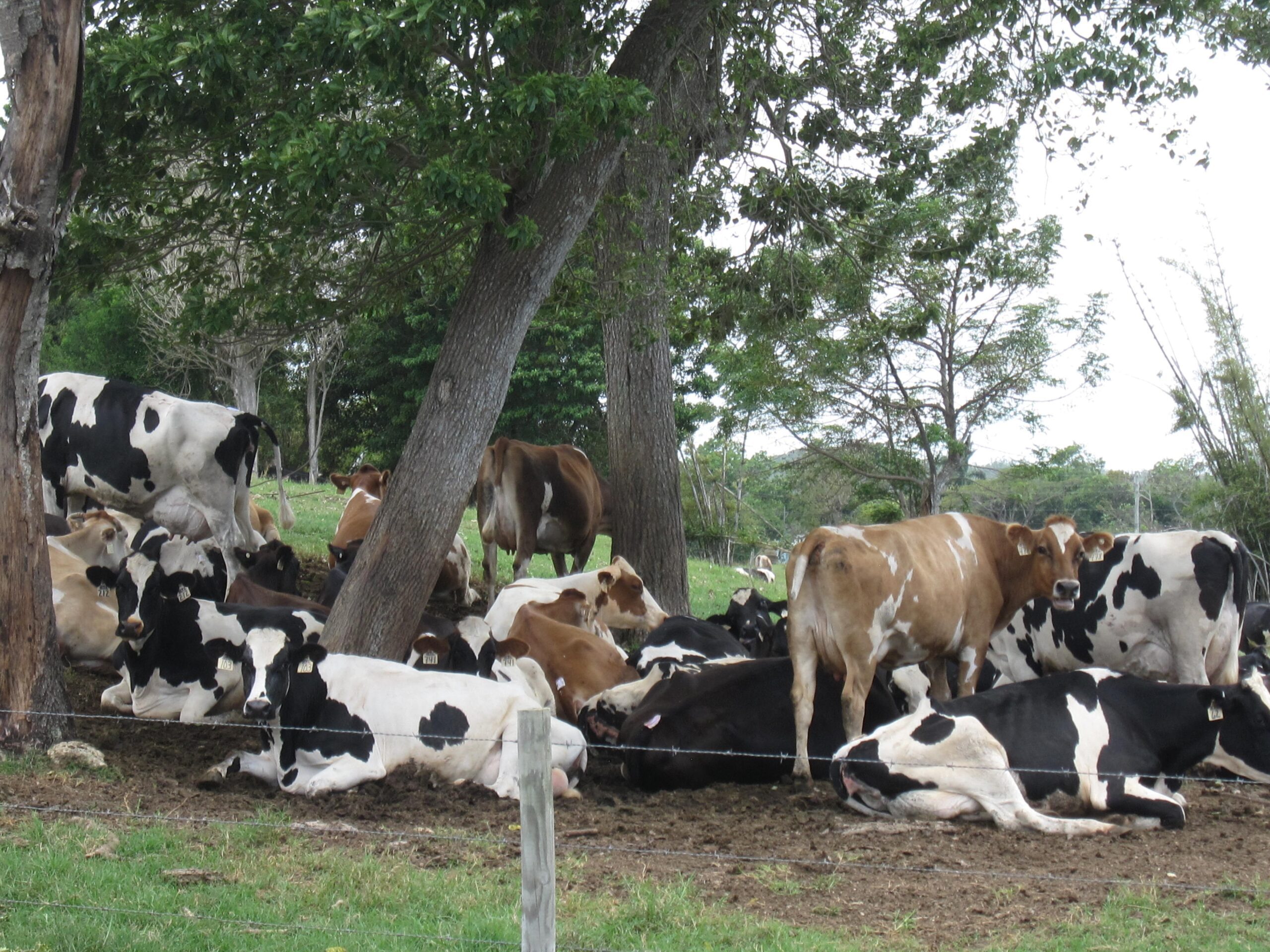Puerto Rico’s top agricultural sector is dairy farming. While 85% of the Island’s food is imported, milk is mostly produced locally at small family farms. The milk produced accounts for one third of all Puerto Rico’s agricultural production.
Most farms use milling machines, though in recent years robotic milking has been introduced into the Island. However, the milk production in Puerto Rico has been about the same for the past 30 years, and the costs are rising. Local milk costs an average of $7.00 or more, nearly double the price in the states.
The price of grain has risen with changing weather patterns in the states. Most fairy farmers import grain to feed their cattle. The cows are mostly Holsteins, and they are not perfectly suited to the tropical heat of Puerto Rico. Energy costs are also nearly twice as much as in the states.These factors account for the high price of milk. Consumers may not like the prices, but Puerto Rico limits imports of milk, so local dairies aren’t in competition with mainland dairies.
Even so, times are hard for dairy farmers. With less pasture land available and the cost of imported grain on the rise, some famers rely on cheaper concentrated feeds and more intensive farming. The result is contaminated water, with high levels of phosphorous.
Solutions
The University of Puerto Rico’s Agricultural Experiment Station is working on developing legumes to take the place of less nutritious grasses. They hope that a change of pasture crops could help increase milk production and reduce costs. They are also working with a local genetic change found in some cattle born in Puerto Rico. This new type of Holsten could be better suited to the tropical heat and better able to stay healthy on the Island.
The traditional dairy farms in Puerto Rico are small, family-owned operations. They are mostly located in the western part of the island, with the main dairy-producing regions being the municipalities of Mayagüez and San Sebastián. Most of the farms have between five and twenty cows, and produce a variety of milk, cheese, and other dairy products. Recently, farm size has been increasing, and some farms run hundreds of cows. This change has brought a labor shortage — thus the reliance on mining machine and robotic milkers. While automation can help the farms keep running without the need for so many workers, the cost of energy is prohibitive. Solar generators could be a solution.
Dairy farming in Puerto Rico is highly regulated by the government. Dairy farms must meet strict regulations regarding animal welfare, feed quality, and milk production. This includes the use of antibiotics and hormones, as well as the use of pasteurized milk. In addition, all dairy farms must be certified by the Puerto Rico Department of Agriculture in order to operate legally.
The Puerto Rican government is heavily involved in the dairy industry, providing subsidies, loans, and technical assistance to dairy farmers. The government also helps to promote the industry by providing marketing and advertising funds, and by providing educational programs on dairy farming and animal husbandry. There are also limits on milk imports, which help local farmers to sell their milk.
The rise of agriculture
Agriculture as an industry has been growing in Puerto Rico in recent years. This helps the Island diversify the economy and could help reduce the dependence on imported food. Dairy farming has a part to play.








No responses yet